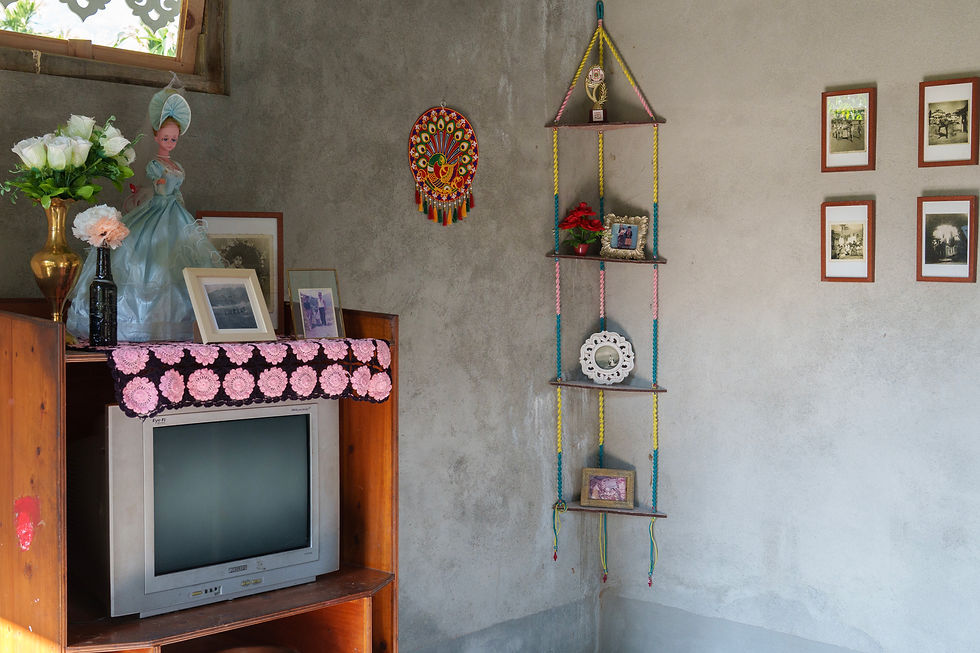Devithans of Sikkim Himalaya- A Cultural Embodiment
- Abriti Moktan
- Jan 22, 2022
- 3 min read
Updated: Jan 25, 2022
By Abriti Moktan Celebrating mountain day without highlighting the cultural values of the mountain landscape would be incomplete. Devithans provide a fertile ground to testify for the rich cultural and biological diversity of the Sikkim Himalaya.
The embedded belief system in societies lays the foundation of sacred sites which often evokes awe and reverence among the local people. It is a common phenomenon of relating sacred sites to the built environment such as temples, monasteries, churches, mosques, synagogues, and other religious architectural structures. Devithans, however, are distinct open natural sacred sites regarded as abode of local deities by the indigenous people in Sikkim Himalaya.
Devithans are indeed a conspicuous feature of the rural landscape in the biodiversity hotspot of the Eastern Himalayan state of Sikkim. Apart from being an ethnic heritage, the devithans’ existence is founded on a strong animistic belief system and myths upheld by the indigenous people. They are, in fact, a production of the belief system which is reified by the biological diversity and hydrological regime-- the objective reality of the place. The traditional religious customs and rituals performed at these sites provide cultural association of the people with their land.
The presence of pristine forests, hydrological systems in the form of water sources and springs, and biodiversity in these devithans make them unique community-conserved areas which reflect the intrinsic relationship of culture, spirituality and nature. Devithans, apart from being sacred sites, are also tied to the heritage of indigenous people, offering intergenerational transmission of traditional ecological, spiritual, and cultural knowledge, cross-cultural understanding, environmental education, and biodiversity learning.
The local people formulate and abide by regulatory practices which reify the idea of maintaining purity and sanctity of the sacred site. There are limited activities within and certain taboos governing these devithans. They are small patches of community conserved areas which are found within or at the periphery of the villages. They serve as an instrument for the local communities to establish their autochthony and sense of belonging to their land in a region having a complex social web. Devithans are not just places of worship but a dynamic site having cross-cutting matrices of cultural politics, social mobility, and ecological value.
Conservation is actually an outcome of daily practices which has a formal denotation in the present day. With cultural diversity being increasingly linked to biological diversity, scientists, academicians, practitioners, and policy makers have to take cognizance of the cultural aspects of societies which are crucial in devising a sustainable future more so required in the present scenario with the global pandemic wreaking havoc in our lives.
The culture, values, spirituality, and nature help us understand our existence in this world. Their interdependence makes them mutually inclusive and if one of them is threatened or endangered then it jeopardizes the existence of the others. The devithans exemplify community conserved sacred cultural areas in socio-ecological landscape outside of protected regions. They serve as an epitome of inseparable human nature
relationships which have existed since the birth of humankind.
Abriti Moktan is a Research Associate at the Ashoka Trust for Research in Ecology and the Environment (ATREE), Eastern Himalaya-Northeast India Regional Office, NH 10, Tadong, Gangtok, Sikkim. ATREE works on issues of Biodiversity, Ecosystem Services, Livelihoods, Sustainable Agricultures & Food Systems, Climate Change. These are addressed through interdisciplinary research, field implementation/demonstration, training & skilling, dialogue, networking, outreach, and communication. www.atree.org This article is part of one of the components of the larger assignment to ATREE—’Identifying, assessing, delineating and mapping areas with High Conservation Values (HCVs) and developing management recommendations/plans for them in SECURE Himalaya project landscapes in selected districts of Sikkim’—as part of the GOI-UNDP SECURE Himalaya Project. This article is produced as part of the celebrations for the International Mountain Day 2020 (11 December) as part of a series of articles for the month of December 2020.




Comments